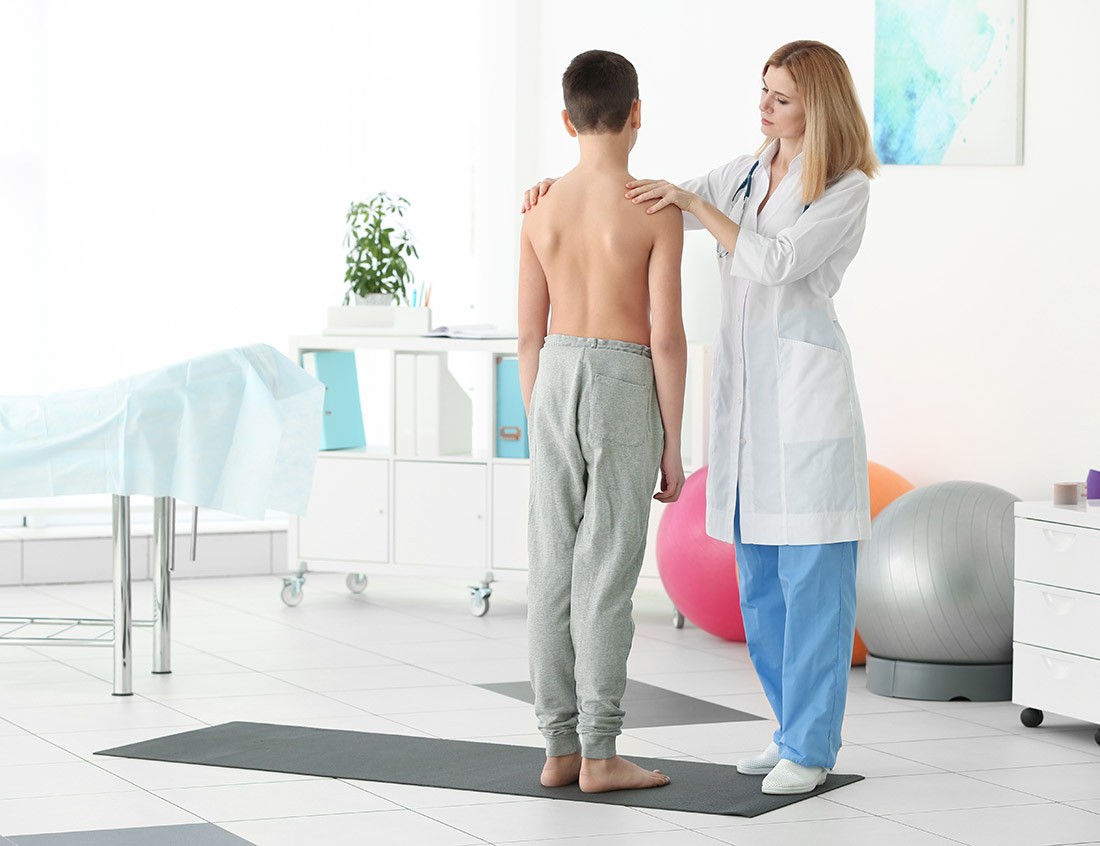
Children today spend their time completely differently than they did just 20 years ago. Technology now takes up a large portion of their lives, often devoted to learning and play. Children are very comfortable in a digital environment and are familiar with using mobile devices such as smartphones, tablets, and laptops. It's common knowledge that they spend less time outdoors with their peers and participate less frequently in various forms of physical activity. Therefore, they tend to have better-developed manual skills related to the use of thumbs and fingers than motor skills such as strength, endurance, flexibility, or jumping. Prolonged periods of sitting at school or at home also have consequences and can be responsible for various postural defects in children. Find out what should be a cause for concern and when to consult a specialist. A lifestyle in which children lack adequate physical activity can lead to poor physical development and increase the risk of postural defects. To prevent the development of postural defects in children, it's important to schedule recommended visits with specialists – pediatricians and orthopedists. It is also necessary to provide the youngest with an appropriate amount of exercise and systematically monitor their physical development.

How to examine a child's posture yourself?
You can assess a child's posture by looking at them from the front, back, and side. A healthy posture is one in which the individual segments of the trunk and limbs are positioned symmetrically and harmoniously. Only correct posture will ensure economical and aesthetically pleasing body movement.

Posture defects in children - what exactly should you pay attention to when assessing a child's posture?
- Look at your baby from the front and note the position of their ears. Their ears should be at the same level.
- Notice the distance between your right ear and your right shoulder. Then, check the distance between your left ear and your left shoulder. Notice whether your neck is straight or tilts more toward one shoulder.
- Check whether the nose is centered when the baby looks directly at you, or whether the head is turned slightly to one side.
- Assess whether both shoulders are at the same level, or is one shoulder lower than the other? Does one collarbone protrude more than the other?
- When your child stands with their arms relaxed at their sides, check to see if one arm is lower than the other. This difference may indicate asymmetry.
- Have your child place their hands on their hips. Check that both hips are at the same level. If one hip is higher than the other, it means the pelvis is not aligned properly.
- Check that both patellas are at the same level.
- Look at your child's feet and notice if one foot is turned more outward or inward than the other.
- Looking at your baby from the side, notice specific body parts that should be aligned from top to bottom. If you were to draw a line from the center of your baby's ear to the floor, it should pass through the middle of their shoulder, the middle of their hip, the middle of their knee, and the middle of their ankle.
If you notice anything disturbing in any of the points, contact a specialist (doctor or physiotherapist) for a thorough assessment of your posture.

Assessing a child's figure - How to use clothing for this purpose?
Clothing can also be helpful in spotting poor posture in children. Look for the following:
- How does clothing fit a child?
- Does the neckline of a T-shirt always shift to the side?
- Does the shirt collar fit symmetrically or is one side lower and the other higher?
- When your child carries a purse or bag over their shoulder, does the strap keep slipping off their shoulder?

Scoliosis - the most common postural defects in children
Scoliosis is a lateral curvature of the spine, specifically a three-dimensional curvature. Be sure to closely monitor your child, starting around age 10, for any changes in the spine. By regularly observing their child's posture and back, parents can quickly determine if their spine has changed and can identify any postural abnormalities. The Adams test allows parents to very effectively determine if their children are developing scoliosis. One of the most common symptoms of scoliosis is a protrusion of one shoulder blade and a rib hump. Other signs include misaligned shoulders or a pelvis that is shifted to one side.
How to perform the Adams test:
- Have your child take off their shirt and stand with their back to you.
- When your child stands upright, look for visible signs of scoliosis – do their shoulders, ribs, neck, waist, and hips look symmetrical? Or do they seem tilted to one side?
- Ask your child to lean forward.
- When your baby is in a forward bending position, look at their back. Is one side of their chest higher than the other?
Although not everyone's body is perfectly symmetrical, any irregularities visible to the naked eye can be a potential sign of scoliosis. In this case, a visit to a doctor is recommended for a more accurate assessment of your child's posture.







Podziel się:
Time for bed - ways to sleep healthily and put your child to sleep
Time for bed - ways to sleep healthily and put your child to sleep